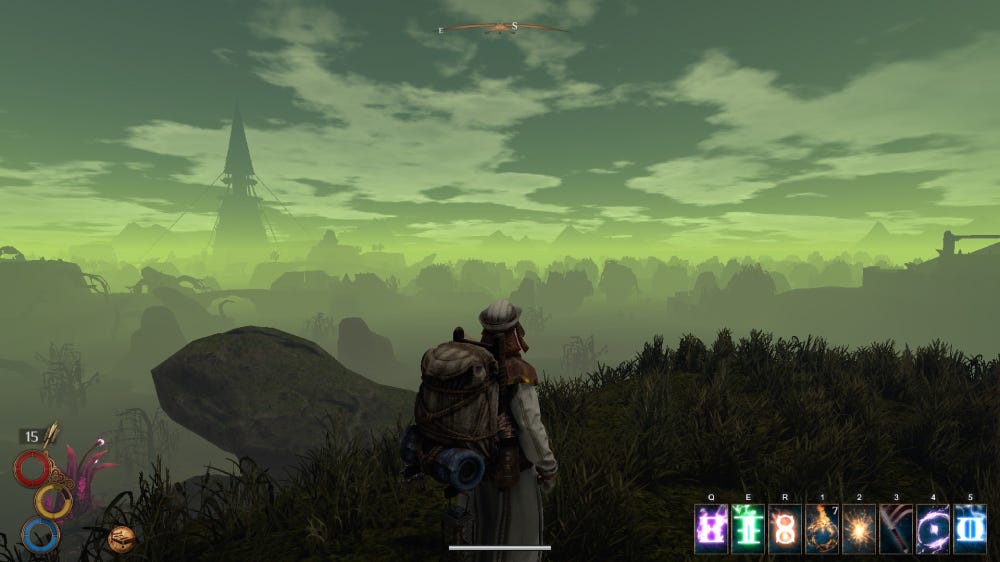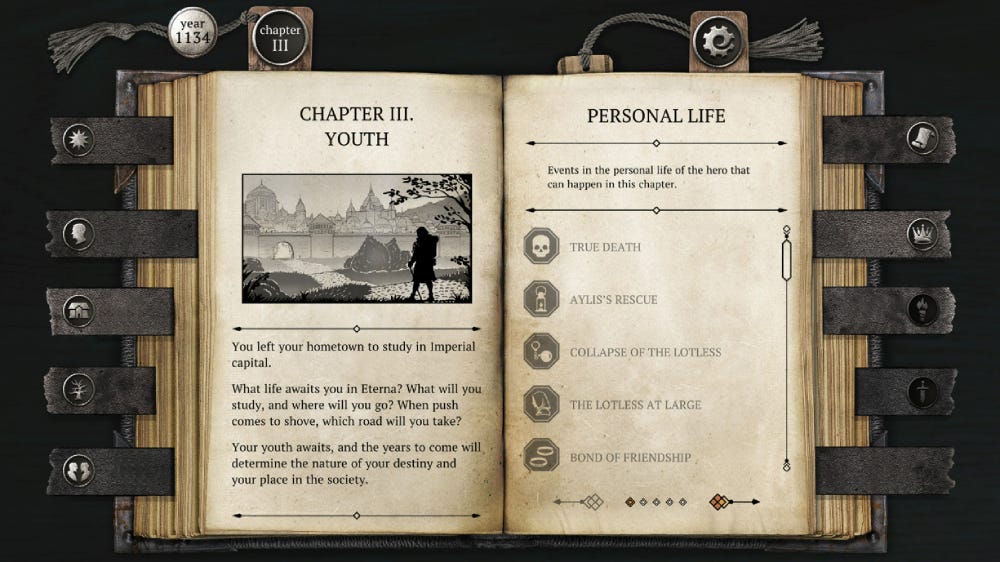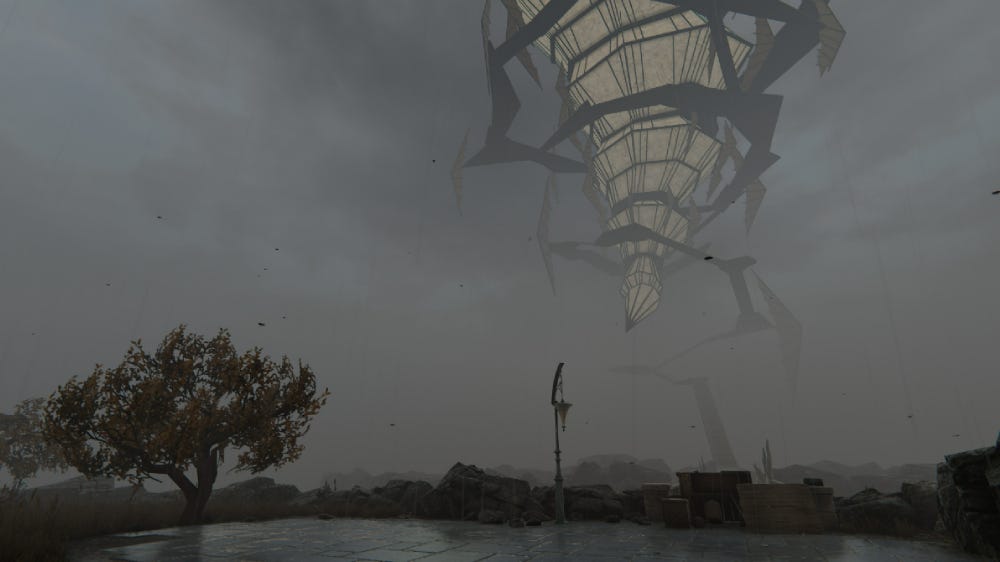The Art of Meaningful Deaths in Video Games
Death with consequences
What happens when the player “fails” in your game?
Failure might not be the first thing that comes to mind when thinking about game design, but it’s one of the most important aspects since it’s integral to the feeling of achievement.
What’s considered a failure can vary widely across genres. Failing to solve a puzzle in a puzzle game or being spotted in a stealth game can be perceived as failure. However, the most common failure state in games is, without a doubt, the classic death screen. You die (or fail) and must restart from the latest checkpoint.
Some games, though, make “dying” a core part of the experience. In these games, death isn’t the end but rather an opportunity to progress.
In this issue, we’ll explore three games that use unique mechanics around dying. Let’s go!
Outward: Part of the Adventure
Outward is an adventure/survival game where you don’t actually die. But what’s the point of “surviving” if there’s no “dying”? Well, there are worse fates than death.
Whenever your HP drops to 0, which happens quite often as the game thrives on making you suffer, a random scenario unfolds. If luck is on your side, someone might drag you back home, kindly taking your hard-earned money in the process. If you’re unlucky, you might wake up as a slave, stripped of your cash, gear, potions, and backpack. The outcome of your failure depends on your location, and the possibilities are many. In some cases, “dying” might even result in a positive turn of events, such as healing a negative status.
The system runs on uncertainty. Once you fail, you don’t know what consequences you’ll have to face. And whatever happens, it all ties back to the game’s core theme. Did monsters drag you into a cave and devour all your food? Did bandits steal your armor? Well, it’s all part of the adventure.
The Life and Suffering of Sir Brante: Death as a Resource
The Life and Suffering of Sir Brante is a narrative-driven, text-based RPG where death is built into the narrative and worldbuilding. You play as Sir Brante, a commoner born into a noble family, navigating life through a series of choices. As the title suggests, these choices inevitably lead to suffering—and, eventually, death.
But death in this game isn’t the end. At least, not initially. During your first three deaths, known as “Lesser Deaths,” you are reborn. These allow the narrative to continue. However, if you die a fourth time, you face the “True Death,” where your journey ends for good. This is true for other people in the world too. Everyone (with some exceptions) is reborn until they face the True Death.
Having multiple lives creates an interesting dynamic in the narrative. It’s a highly limited resource that you have to spend wisely to make it to the end. Will you use it to unlock new dialogues and gain new stats? Or will you spend it to escape a difficult situation?
Pathologic 2: Death’s Heavy Toll
Pathologic 2 is a first-person survival RPG where you must race against time to save a town consumed by a plague. Your mission is to fight the plague and save as many people as possible. On the surface, it looks like the game has a very simple save-load system.
But when you die, you’re transported to the Theatre of Death, where a particular NPC explains that if you die, you will be punished. And punished you will be. Each death results in permanent penalties, such as reductions to your maximum health and hunger. Think you can bypass these consequences by reloading a save? Think again. The game applies these penalties across all saves.
Dying is a heavy burden in Pathologic 2. Thus, surviving does feel significant.
Final Words
There are countless games that turn death into a meaningful mechanic; these three are just the ones that stood out to me. While each of these games integrates death into the gameplay differently, they all have something in common: Death has irreversible consequences.
What consequences do players face when they fail in your game?
You Might Also Like
Me
I’ve been working on the demo day and night. I ended up scrapping most of the content I added last year because I wasn’t happy with it, so now I’m trying to make up for the lack of content. And to top it off, Steam decided my visual novel wasn’t eligible for the Visual Novel Festival. I’m trying to sort that out too. Wish me luck!
Reading: Wind and Truth is finished, and to be honest, it was quite underwhelming. It fell far below the quality bar set by the previous books. The whole book felt like we were occupied with trivial side quests, though the ending wasn’t too bad. (It felt more like Mistborn Era 2 than Stormlight—if you know what that means.)
Playing: Recently, whenever I get a break from the demo crunch, I play Outward. The game is entirely designed to make the player suffer—and I love it. It’s one of those games that captures the sense of adventure so well. Let me know your build if you’ve played it.
Listening:
Thanks for reading!
And that’s it from today’s issue of GameDev’s Journey. I hope you enjoyed it and found it useful. If you did, please like and leave a comment. Reach out for suggestions, objections, questions, or just say hi.
But regardless, thank you so much for reading, and have a great game dev journey!






I haven't played these games, but death as a game mechanic always fascinated me. I'll make sure to check these out :)
One other game that uses death as a mechanic, which I'll be covering in my next post, is NieR. Death doesn't add any mechanical value to the game, but it's more of a narrative driver, which I find very interesting!
I only played Outward for a little bit, but it confused me and frightened me. I always feel an interest to go back to it with a buddy of mine, but I'll see.
And I saw a whole video on Pathologic, and while the narrative looks cool, the game looks so, so very unforgiving. Maybe I'll give it a shot with the third entry.
This is the first time I see you're working on a visual novel! I've been thinking on making one, too. What engine are you using, and what is it about?